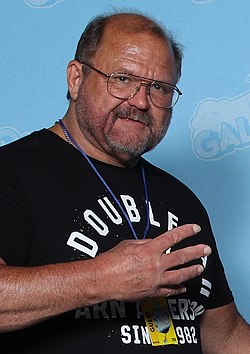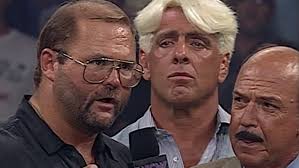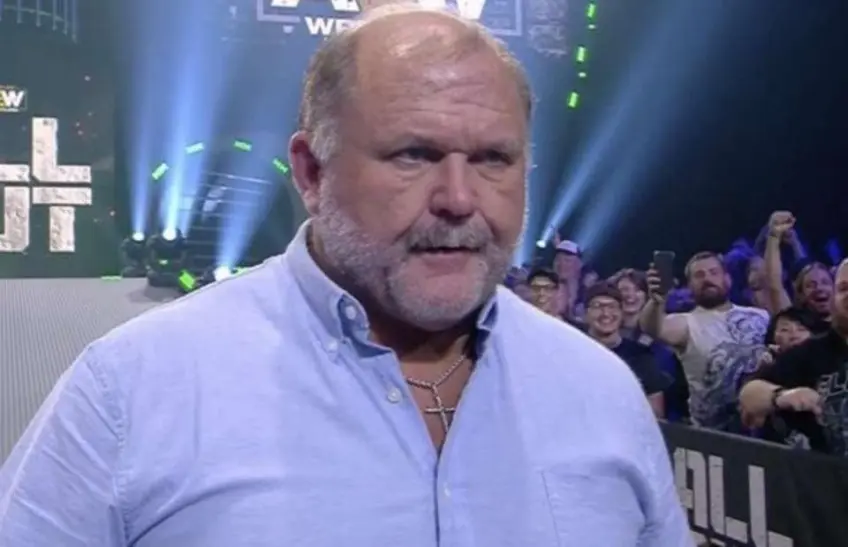Arn Anderson: The Enforcer’s Legacy – A Comprehensive Biography
Early Life and Origins: The Forging of a Tough Guy His childhood and adolescence were not marked by the glamour of the wrestling world but were instead a testament to the blue-collar, hard-working ethos that would define his entire career. From a young age, Lunde was drawn to the physical challenges of sports, finding his calling not in finesse but in raw power and disciplined technique.
During his formative years at West Rome High School, Lunde excelled in football and amateur wrestling. It was on the mats and the gridiron that the foundational elements of his future persona were forged: discipline, resilience, and a relentless work ethic. He wasn’t necessarily the flashiest player, but he was consistently the most dependable, the one who could be counted on to execute his role with brutal efficiency. This reputation followed him into powerlifting, where he further developed his formidable, barrel-chested physique—a body that was not designed for aesthetics but for pure, unadulterated function. It was a physique built for battle, not for the beach.
His transition into professional wrestling felt almost inevitable. The regional circuits of the southeastern United States, particularly the National Wrestling Alliance (NWA) territories, were always searching for tough, credible athletes who could convincingly portray a fighter. Lunde began training and took on various early ring names like “Marty Lunde” and “Super Olympia” in promotions like Southeastern Championship Wrestling and Georgia Championship Wrestling. Recognizing Lunde’s toughness and old-school style, Ole saw an opportunity. He integrated Lunde into a new iteration of his famous tag team, The Minnesota Wrecking Crew, and bestowed upon him the kayfabe (scripted) identity of his nephew, Arn Anderson. This was not just a name change; it was an anointing. It provided instant credibility and a built-in history, connecting the newcomer to a legacy of toughness.
2. Career Beginnings: The Apprenticeship of a Technician
Arn Anderson’s official professional debut occurred in December 1981, but his true education took place on the road, traveling from one small town to another across the wrestling territories of the South. This period was crucial, serving as his apprenticeship in the demanding world of professional wrestling. Unlike many of his contemporaries who relied on high-flying maneuvers or charismatic promos, Anderson’s style was rooted in a different tradition: that of the “ring general” or “mechanic.”
His early work, particularly alongside Ole Anderson, was a masterclass in tag team fundamentals. The Minnesota Wrecking Crew’s matches were not designed for highlight reels; they were designed to tell a story of systematic dismantling.
This was where he honed his ring psychology—the ability to make a scripted fight look like a genuine, violent struggle. He learned how to read a crowd, to manipulate their emotions, and to make every punch, every slam, and every submission hold matter.
Before the bright lights of national television, Anderson built his reputation on being unflinchingly believable. He wasn’t a cartoon character; he was a legitimate threat. His moveset—a devastating spinebuster, a brutal DDT, and his signature Anderson-style spinebuster—was concise and devastatingly effective. There was no wasted motion. Every action had a purpose. This foundational period established the core tenets of the Arn Anderson character: a no-nonsense, technically proficient, and brutally physical brawler who valued victory above applause. He was earning the respect of his peers and veterans, proving that he was more than just a made-up relative; he was a legitimate talent being groomed for greatness.

Management and Producer Career: The Professor of the Squared Circle When a neck injury forced his retirement in 1997, Arn Anderson’s in-ring career was over, but his contribution to the business was far from finished. He seamlessly transitioned into a critical backstage role, first in WCW and then, following its purchase, in WWE in 2001.

He married his wife, Erin, in 1985, and together they have two sons. His family has always been his sanctuary, a world away from the theatrics of professional wrestling
The highest honor of his career came in 2012, when he was inducted into the WWE Hall of Fame as a key member of The Four Horsemen. This official recognition solidified his place among the immortals of the industry. Arn Anderson’s legacy is unique. He never held a world heavyweight championship, and he was often the second or third name on the marquee. Yet, his impact is arguably greater than many who did. His legacy is that of consistency, credibility, and excellence. He is remembered as the ultimate teammate, the man you could always count on, the wrestler’s wrestler. He wasn’t defined by championship gold but by the universal respect he commanded from fans, peers, and critics alike. He is The Enforcer, a true pillar of professional wrestling, and his teachings continue to shape the industry to this day.

